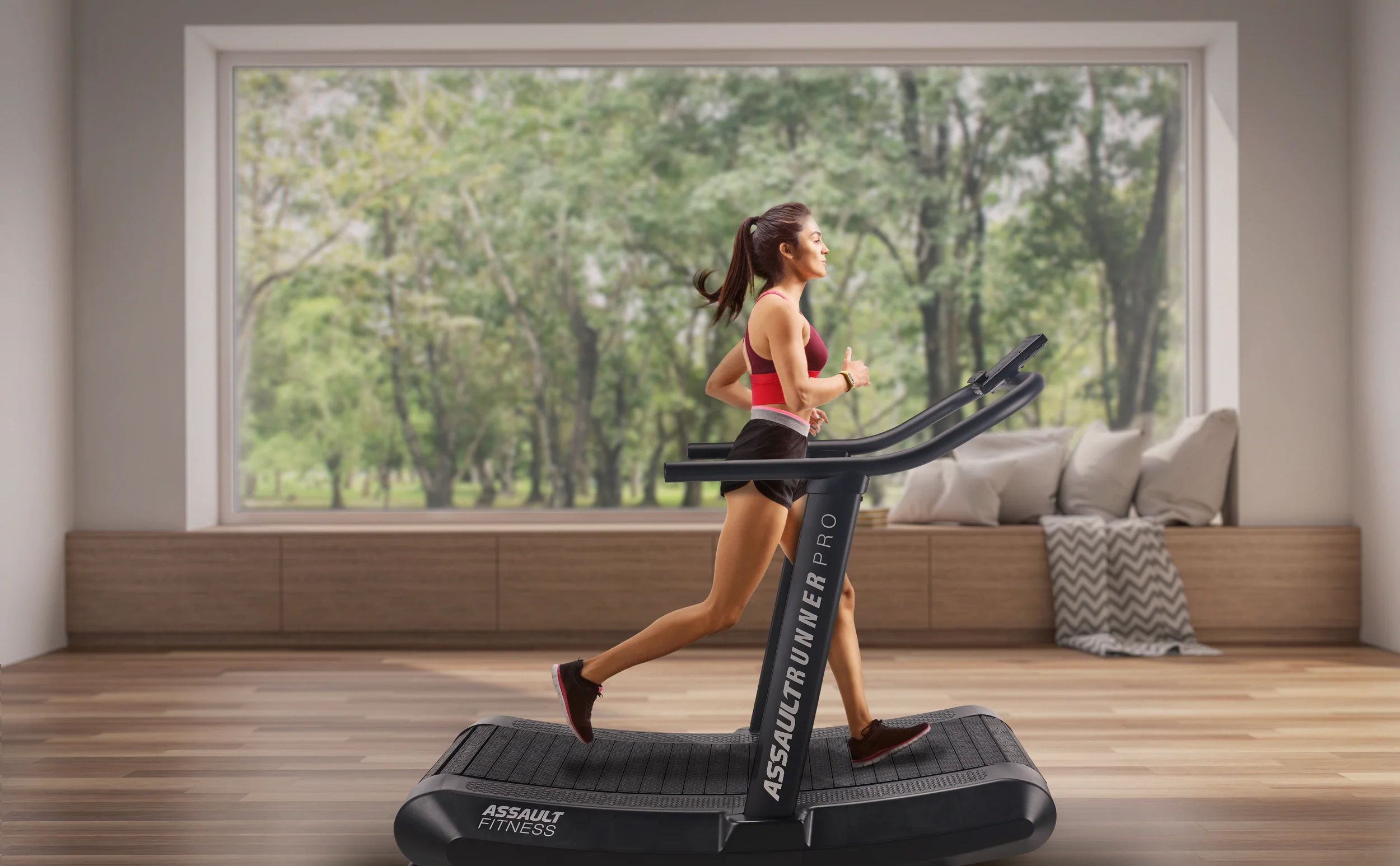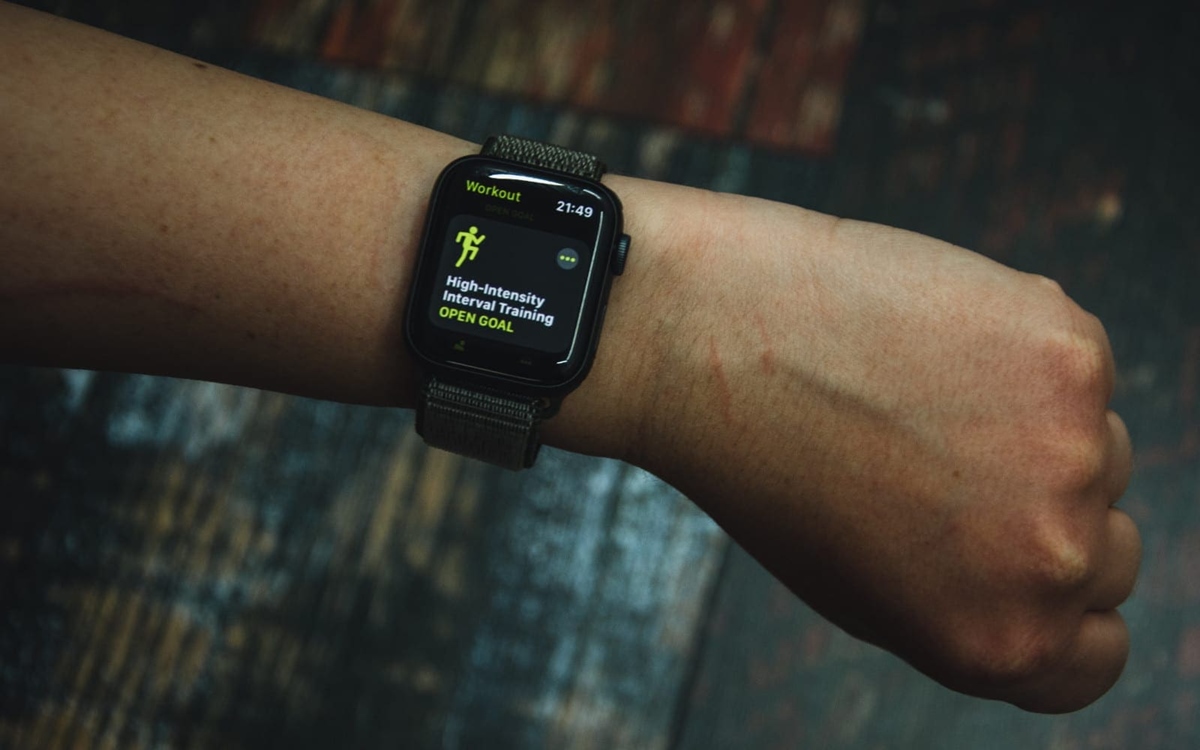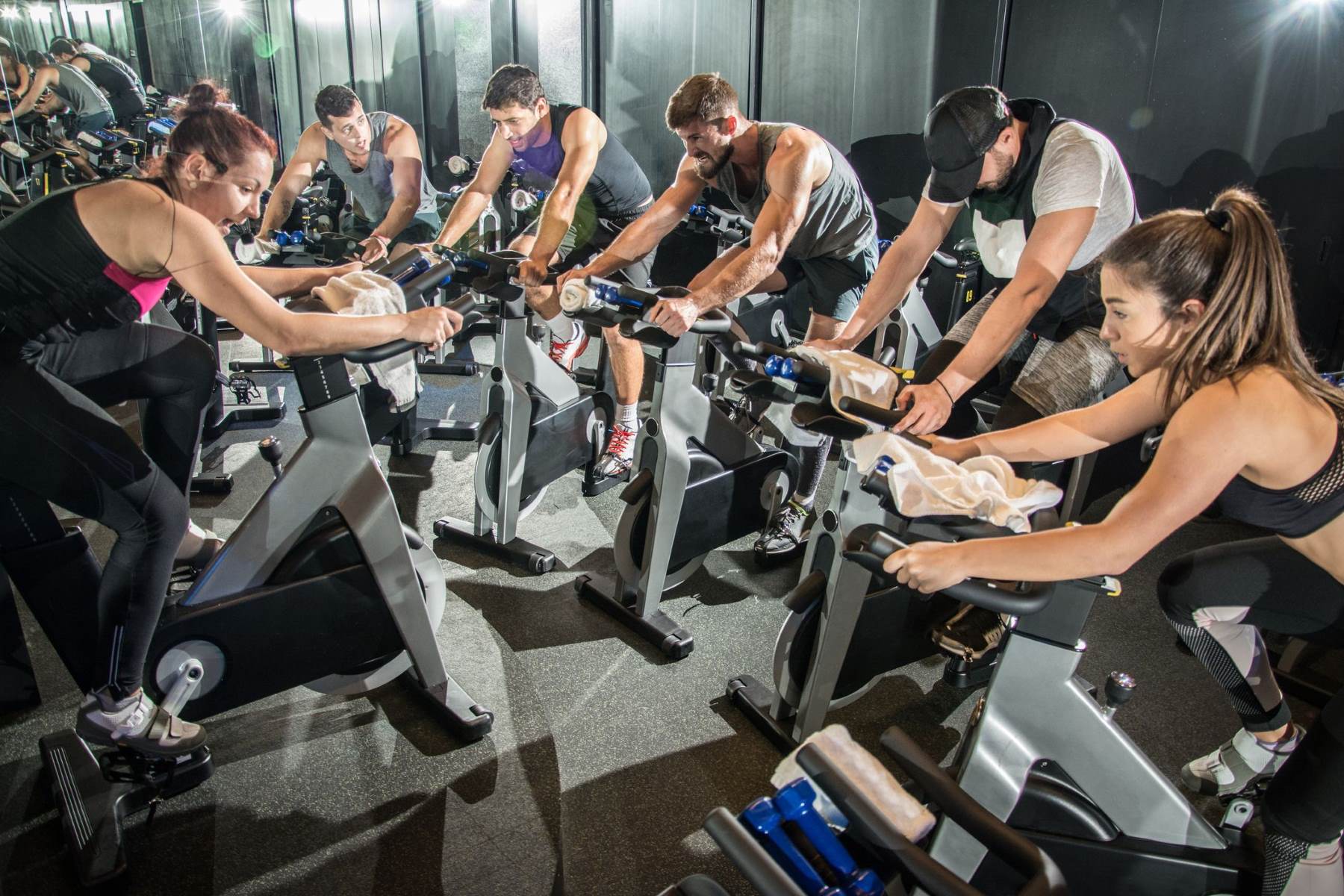Home>Misc>Featured>How Do I Do High Intensity Interval Training


Featured
How Do I Do High Intensity Interval Training
Modified: January 2, 2024
Discover the benefits of high intensity interval training and learn how to incorporate it into your fitness routine. Get featured workout tips and techniques for optimal results.
Introduction
Welcome to the world of High Intensity Interval Training (HIIT)! If you’re looking for an efficient and effective way to get in shape and improve your overall fitness, then HIIT may be just what you need. HIIT has gained immense popularity in recent years due to its ability to deliver maximum results in a short amount of time.
But what exactly is HIIT? In simple terms, it involves alternating periods of intense exercise with short recovery periods. This concept may sound challenging, but it’s the key to achieving significant improvements in cardiovascular fitness, burning calories, and boosting metabolism.
Unlike traditional steady-state cardio workouts, which involve long periods of continuous exercise at a moderate intensity, HIIT pushes you to your limits by incorporating short bursts of intense activity. By doing so, you not only challenge your muscles and cardiovascular system but also enhance your body’s ability to burn fat even after your workout is over.
The beauty of HIIT lies in its versatility and adaptability. Whether you prefer running, cycling, swimming, or bodyweight exercises, there’s a HIIT routine that can suit your preferences and goals. Plus, it can be done in the comfort of your own home or at the gym, making it accessible to people of all fitness levels.
In this article, we’ll explore the various benefits of HIIT, discuss how to get started with HIIT workouts, provide tips for choosing the right exercises, and offer guidance on designing an effective HIIT routine. We’ll also cover important safety considerations to ensure that you can engage in this form of training without risking injury.
So, whether you’re a beginner seeking to improve your fitness or an experienced athlete wanting to break through a plateau, join us on this HIIT journey and discover how this training method can revolutionize your workouts and take your fitness to new heights!
What is High Intensity Interval Training?
High Intensity Interval Training (HIIT) is a workout method that involves alternating between short bursts of intense exercise and brief periods of rest or recovery. It challenges both your aerobic and anaerobic systems by pushing you to your maximum effort during the intense intervals.
The defining characteristic of HIIT is the intensity of the workout. During the intense intervals, you should be working at around 80-95% of your maximum heart rate. This level of intensity elevates your heart rate quickly and keeps it elevated throughout the workout, leading to a greater calorie burn.
HIIT workouts are typically shorter in duration compared to traditional cardio workouts. A typical session can last anywhere from 15 to 30 minutes, including warm-up and cool-down periods. Despite their shorter duration, HIIT workouts are highly effective at improving cardiovascular fitness and burning calories.
One of the key benefits of HIIT is the phenomenon known as Excess Post-Exercise Oxygen Consumption (EPOC). After an intense workout, your body continues to burn calories at an elevated rate during the recovery period. This means that even after you’ve finished your HIIT session, your body is still working hard to restore itself to its pre-exercise state, leading to a higher calorie burn.
A major advantage of HIIT is its versatility. You can adapt HIIT to suit your fitness level and preferences, using a variety of exercises such as running, cycling, swimming, bodyweight exercises, or a combination of these. This flexibility allows you to choose the activities that you enjoy and that align with your fitness goals.
Another aspect of HIIT that sets it apart from traditional cardio workouts is the concept of recovery periods. These short breaks in between the intense intervals allow your body to recover partially, ensuring that you can maintain a high level of intensity throughout the entire workout. The length of the recovery periods can vary depending on your fitness level and the specific workout, but they are generally shorter than the intense intervals.
Overall, HIIT is a time-efficient and effective way to improve your fitness and burn calories. Its intense nature challenges your body to work harder, leading to improvements in cardiovascular fitness, fat loss, and muscle tone. So, if you’re looking for a workout method that delivers maximum results in a shorter time frame, consider incorporating HIIT into your fitness routine.
Benefits of High Intensity Interval Training
High Intensity Interval Training (HIIT) offers numerous benefits that make it a popular choice for individuals seeking to improve their fitness levels. Let’s explore some of the key advantages of incorporating HIIT into your exercise routine:
- Efficient Calorie Burn: HIIT workouts are renowned for their ability to maximize calorie burn in a short amount of time. The intense intervals and elevated heart rate during the workout stimulate your metabolism, leading to greater calorie consumption during and after the session. Studies have shown that HIIT can burn more calories compared to traditional cardio exercises like jogging or cycling.
- Time-Saving: One of the greatest advantages of HIIT is its efficiency. The short duration of HIIT workouts allows you to achieve similar or even better results compared to longer, steady-state cardio workouts. This makes HIIT a time-saving option for individuals with busy schedules who find it challenging to fit in lengthy exercise sessions.
- Improved Cardiovascular Fitness: Regular participation in HIIT can significantly enhance your cardiovascular fitness. The intense nature of the workouts pushes your heart and lungs to work harder, promoting increased oxygen delivery to your muscles. Over time, this can lead to improved aerobic capacity, allowing you to endure longer, more intense workouts.
- Muscle Tone and Strength: HIIT workouts engage multiple muscle groups, promoting overall muscle tone and strength development. The intense exercises used in HIIT, such as squats, burpees, and lunges, target various muscle groups simultaneously, helping to sculpt and define your body. This makes HIIT an effective option for individuals looking to build lean muscle mass and achieve a toned physique.
- Enhanced Fat Loss: HIIT is known for its ability to promote fat loss while preserving lean muscle mass. The intense and varied nature of HIIT workouts keeps your body guessing and prevents it from adapting to a specific routine. This leads to continued calorie burning and fat loss, even after you’ve finished the workout.
- Increased Metabolic Rate: The intensity of HIIT workouts has been found to elevate your metabolic rate for hours after the session, thanks to the EPOC phenomenon mentioned earlier. This means that your body continues to burn calories at a higher rate, even when you’re at rest. As a result, incorporating HIIT into your fitness routine can help boost your overall metabolism.
- Versatility and Adaptability: HIIT can be tailored to suit individual preferences and fitness levels. With a wide range of exercises to choose from, you can customize your HIIT workouts to include activities that you enjoy and that align with your goals. Whether you prefer bodyweight exercises, running, cycling, or a combination of different activities, there’s a HIIT routine that can cater to your needs.
By integrating HIIT into your fitness regimen, you can reap these incredible benefits and achieve your fitness goals more efficiently. However, it’s important to approach HIIT with proper form and caution to prevent injury. In the next sections, we’ll discuss how to get started with HIIT, choose suitable exercises, design a routine, and ensure safety during your workouts.
How to Get Started with High Intensity Interval Training
Getting started with High Intensity Interval Training (HIIT) is exciting and can be an excellent way to ramp up your fitness routine. However, it’s essential to approach HIIT with proper planning and consideration to ensure a safe and effective workout. Here are some steps to help you get started with HIIT:
- Consult with a healthcare professional: Before incorporating HIIT into your exercise routine, it’s advisable to consult with a healthcare professional, especially if you have any underlying health conditions or if you’re new to high-intensity exercise. They can provide personalized guidance and ensure that HIIT is suitable for your specific circumstances.
- Start at your fitness level: HIIT workouts can be intense, so it’s important to start at a level that matches your current fitness. Begin with shorter intervals and longer recovery periods, gradually increasing the intensity and decreasing the recovery time as your fitness improves. This approach helps prevent injury and overexertion.
- Warm-up and cool-down: Always include a proper warm-up and cool-down in your HIIT sessions. This helps prepare your body for the intense exercise and supports recovery afterward. Start with 5-10 minutes of light cardio or dynamic stretching to warm up your muscles, and finish with 5-10 minutes of static stretching to cool down and promote flexibility.
- Choose the right exercises: Select exercises that target multiple muscle groups and elevate your heart rate. Bodyweight exercises such as squats, lunges, burpees, and mountain climbers are excellent choices because they require little to no equipment and can be modified to suit different fitness levels. You can also incorporate cardiovascular exercises like sprints, cycling, or jumping rope.
- Optimize your work-to-rest ratio: The work-to-rest ratio in HIIT refers to the ratio of time spent in intense exercise to time spent in recovery. As a beginner, a common ratio is 1:2, which means you’ll perform intense activity for 20-30 seconds followed by 40-60 seconds of recovery. As you progress, you can experiment with different ratios based on your fitness goals and preferences.
- Gradually increase intensity: Over time, aim to increase the intensity of your HIIT workouts. This can be achieved by shortening the rest periods, increasing the intensity of exercises, or adding weights or resistance to your movements. Remember to listen to your body and progress at a pace that feels challenging but manageable.
- Be mindful of proper form: Maintain proper form throughout your HIIT workouts to prevent injury and ensure optimal results. Pay attention to your posture, engage your core, and use controlled movements. If you’re unsure about proper form, consider working with a qualified fitness professional to guide and correct your technique.
- Listen to your body: It’s essential to listen to your body and respect its signals during HIIT workouts. Push yourself, but know your limits. If you experience excessive fatigue, dizziness, or pain, it’s important to reduce the intensity or take a break. Rest and recovery are equally important for achieving long-term progress and preventing overtraining.
- Stay consistent: Consistency is key when it comes to HIIT. Aim to incorporate HIIT workouts into your routine at least 2-3 times per week, alternating with other forms of exercise. This consistency will allow your body to adapt, improve your fitness levels, and reap the full benefits of HIIT.
Remember, HIIT is a challenging workout method that requires dedication and effort. However, with proper planning, gradual progression, and attention to safety, you can embark on a successful HIIT journey that will elevate your fitness and help you achieve your goals.
Choosing the Right Exercises for High Intensity Interval Training
When it comes to High Intensity Interval Training (HIIT), the exercises you choose play a crucial role in the effectiveness and enjoyment of your workouts. By selecting exercises that target multiple muscle groups and elevate your heart rate, you can maximize the benefits of HIIT and create a well-rounded routine. Here are some factors to consider when choosing the right exercises for your HIIT workouts:
- Bodyweight exercises: Bodyweight exercises are an excellent choice for HIIT workouts, as they require no equipment and can be performed anywhere. Squats, lunges, push-ups, burpees, mountain climbers, and plank variations are just a few examples of bodyweight exercises that engage multiple muscle groups and provide a cardiovascular challenge.
- Cardiovascular exercises: HIIT can incorporate various cardiovascular exercises to elevate your heart rate and increase calorie burn. Running, cycling, jumping rope, and high knees are effective options for boosting cardiovascular fitness. Consider adding short bursts of intense activity followed by periods of recovery to maximize the benefits of these exercises.
- Interval training with gym equipment: If you have access to gym equipment, you can incorporate interval training into your HIIT workouts. Exercises such as rowing, treadmill sprints, stationary bike, or elliptical machine can be used for short bursts of intense effort followed by recovery periods. These exercises provide the advantage of adjustable resistance and intensity levels.
- Functional movements: HIIT can be combined with functional movements to increase overall strength and mobility. Incorporating exercises like kettlebell swings, medicine ball slams, and battle ropes engages multiple muscle groups and challenges your coordination and stability.
- Alternative HIIT options: Beyond traditional exercises, alternative HIIT options can add variety and fun to your workouts. Options like kickboxing, dance-based HIIT classes, or circuit training incorporating various equipment and exercises keep your routine exciting and engaging.
- Consider your fitness level: When choosing exercises for HIIT, consider your current fitness level and any limitations you may have. If you’re a beginner, start with low-impact exercises and gradually increase the intensity as you become more comfortable and fit. Make sure to include exercises that are challenging yet achievable for you.
- Variety and progression: To prevent boredom and plateaus, vary the exercises in your HIIT routine. Incorporate a mix of cardiovascular, strength, and functional exercises, and experiment with different combinations and intervals. As your fitness improves, progress by increasing the complexity, duration, or intensity of the exercises to continue challenging your body.
- Enjoyment: Select exercises that you enjoy and find motivating. This will help you stay consistent and make your HIIT workouts something to look forward to. Whether it’s kicking, jumping, running, or dancing, choose exercises that resonate with you and make you feel energized and excited to push yourself.
Ultimately, the key to choosing the right exercises for HIIT is finding a balance between cardiovascular challenge and engaging multiple muscle groups. By incorporating a variety of exercises that suit your fitness level and preferences, you can create dynamic and effective HIIT workouts that keep you motivated and eager to achieve your fitness goals.
Designing Your High Intensity Interval Training Routine
A well-designed High Intensity Interval Training (HIIT) routine is essential to ensure a balanced and effective workout. By carefully planning your intervals, exercises, and rest periods, you can optimize your HIIT sessions for maximum results. Here are some tips for designing your HIIT routine:
- Set your goals: Define your fitness goals before designing your HIIT routine. Are you aiming to improve cardiovascular endurance, build strength, or lose weight? Your goals will help determine the structure and focus of your HIIT workouts.
- Determine your work-to-rest ratio: The work-to-rest ratio is a crucial component of HIIT. It determines the duration of your intense intervals and the length of your recovery periods. As a starting point, consider a 1:2 ratio, such as 30 seconds of intense exercise followed by 60 seconds of recovery. Adjust the ratio based on your fitness level and goals.
- Select exercises: Choose exercises that target different muscle groups and incorporate cardiovascular challenges. As mentioned before, bodyweight exercises like squats, lunges, burpees, push-ups, and mountain climbers are excellent options. Include a variety of exercises to ensure a well-rounded routine.
- Organize your intervals: Once you’ve selected your exercises, organize them into intervals. For example, you could do a set of squats, followed by push-ups, then mountain climbers, and finish with burpees. Determine the number of intervals you want to complete in your workout and the duration of each interval.
- Warm-up and cool-down: Begin your HIIT routine with a dynamic warm-up to raise your heart rate, loosen your muscles, and prepare your body for the intense exercise. Include exercises like jogging in place, high knees, arm swings, and leg swings. Similarly, end your routine with a cool-down, including static stretching to promote flexibility and aid recovery.
- Progressive overload: To continue challenging your body and making progress, incorporate progressive overload into your HIIT routine. Gradually increase the intensity, duration, or number of intervals over time. This will ensure that your body adapts and continues to improve in strength and endurance.
- Include active recovery: Instead of completely resting during recovery periods, consider adding active recovery exercises. These are low-intensity movements that keep your body active while allowing for partial recovery. Examples include walking, slow jogging, or gentle stretching.
- Track and monitor progress: Keep track of your workouts to monitor your progress. Record the exercises, intervals, and any modifications or advancements you make. Regularly assessing your performance can help you identify areas of improvement and make necessary adjustments to your routine.
- Listen to your body: Pay attention to how your body responds to the HIIT routine. It’s essential to find a balance between pushing yourself and avoiding overexertion. If you experience excessive fatigue, dizziness, or pain, dial back the intensity or take an extra day of rest. Rest and recovery are vital components of HIIT training.
Remember that designing a HIIT routine takes experimentation and tailoring to your individual needs. Don’t be afraid to try different exercises, intervals, and modifications to find the combination that works best for you. With a well-planned HIIT routine, you can maximize the benefits of this training method and achieve your fitness goals.
Proper Warm-Up and Cool-Down for High Intensity Interval Training
A proper warm-up and cool-down are vital components of a successful High Intensity Interval Training (HIIT) session. They not only prepare your body for the intense exercise but also aid in recovery and reduce the risk of injury. Here’s a closer look at the importance of warm-up and cool-down in HIIT, along with some guidelines to follow:
Warm-Up:
A warm-up serves to gradually increase your heart rate, warm up your muscles, and prepare your body for the upcoming intense exercise. It also enhances the mind-body connection and mental focus. Here are some key elements to include in your HIIT warm-up:
- Dynamic stretching: Begin your warm-up with dynamic stretching exercises. These involve moving your body through a full range of motion and increase your body’s flexibility, mobility, and blood flow. Examples include leg swings, arm circles, hip rotations, and walking lunges.
- Cardiovascular warm-up: Incorporate light cardiovascular exercises to elevate your heart rate and warm up your muscles. This can include jogging in place, jumping jacks, high knees, or stationary cycling. Aim for 5-10 minutes of moderate-intensity cardio to get your blood flowing and increase circulation to your muscles.
- Specific movement prep: Include exercises that mimic the movements you’ll be performing during your HIIT workout. For example, if your HIIT routine involves squats and push-ups, include bodyweight squats and push-ups with controlled movements and a slower pace in your warm-up. This helps activate the relevant muscle groups and mentally prepare you for the upcoming exercises.
By incorporating these elements into your warm-up routine, you’ll prime your body for the demands of HIIT and reduce the risk of injury.
Cool-Down:
A cool-down is just as important as a warm-up in HIIT. It allows your heart rate to gradually return to its resting state, prevents blood from pooling in your legs, and aids in recovery. Here’s how to properly cool down after a HIIT workout:
- Light cardio: Include 5-10 minutes of light cardiovascular exercise at the end of your HIIT session. This can be a brisk walk or slow jog. The purpose is to gradually lower your heart rate in a controlled manner.
- Static stretching: Follow your light cardio with static stretching exercises targeting the major muscle groups used during your workout. Hold each stretch for 15-30 seconds and focus on breathing deeply to aid in relaxation. Target areas such as the quadriceps, hamstrings, calves, chest, shoulders, and back.
- Deep breathing and relaxation: Take a few moments to focus on deep breathing and allow your body to relax. This can be done through mindful breathing exercises or a brief meditation. Use this time to mentally unwind and reflect on your workout.
By implementing a proper cool-down routine, you promote recovery, prevent muscle soreness, and gradually return your body to a state of rest.
Benefits of Warm-Up and Cool-Down:
Warm-up and cool-down routines offer several benefits in the context of HIIT:
- Improved performance: A thorough warm-up prepares your body for the demands of intense exercise, enhancing your overall performance during the workout.
- Reduced risk of injury: By gradually increasing your heart rate, warming up your muscles, and activating the relevant muscle groups, you reduce the risk of strains, sprains, and other injuries during your HIIT session.
- Enhanced recovery: Including a proper cool-down allows your body to recover more effectively, reducing muscle soreness and helping you recover faster for your next workout.
- Mental focus and relaxation: Warm-ups and cool-downs also provide an opportunity to mentally prepare for and reflect on your workout. This can help you stay focused, engaged, and motivated throughout your HIIT routine.
Remember, a proper warm-up and cool-down are essential components of a successful HIIT workout. By dedicating a few extra minutes to these routines, you enhance the effectiveness of your training and ensure a safer and more enjoyable experience.
Monitoring Intensity and Progression in High Intensity Interval Training
Monitoring the intensity and progression of your High Intensity Interval Training (HIIT) workouts is essential for achieving optimal results and avoiding plateaus. By tracking key variables and making necessary adjustments, you can ensure that your HIIT routine remains challenging and effective. Here are some strategies for monitoring intensity and progression in HIIT:
Intensity Monitoring:
Monitoring the intensity of your HIIT workouts is crucial to ensure that you’re working at an appropriate level. Here are a few methods to help gauge and adjust the intensity:
- Perceived Exertion: Rely on your own subjective rating of exertion. Use the Borg Rating of Perceived Exertion (RPE) scale, which ranges from 1 (no exertion) to 10 (maximal exertion). Aim to work at an intensity that feels challenging but sustainable throughout the intense intervals.
- Heart Rate Monitoring: Use a heart rate monitor to track your heart rate during your HIIT workout. Monitor your heart rate throughout the intense intervals and aim to be within the target heart rate zone based on your fitness level. This can help ensure that you’re working at the desired intensity level.
- Talk Test: Pay attention to your ability to speak during the intense intervals. If you can have a conversation, you may need to increase the intensity. If you’re struggling to say more than a few words, you may need to decrease the intensity to avoid overexertion.
Experiment with different methods to find the one that works best for you in assessing and regulating the intensity of your HIIT workouts.
Progression Monitoring:
Monitoring progression in HIIT allows you to track your improvements and make adjustments to continue challenging your body. Here are some strategies for monitoring progression:
- Interval Duration and Intensity: Gradually increase the duration or intensity of the intense intervals as your fitness improves. For example, you can increase the work duration from 30 seconds to 40 seconds, or increase the intensity by adding more resistance, speed, or repetitions. This progressive overload helps to continually challenge your body and stimulate further improvements.
- Recovery Periods: Decrease the duration of recovery periods as you become more fit. For instance, reduce the recovery time from 60 seconds to 45 seconds. This modification increases the overall intensity of the workout by shortening the rest periods and maintaining a higher heart rate.
- Additional Sets: Increase the number of intervals or sets you perform in each HIIT session. Instead of completing four sets, aim for five or six as your endurance and fitness improve. This allows you to accumulate more work and volume, leading to greater progress.
- Variations and Challenges: Add variations and challenges to your HIIT routine to continue stimulating your body. Introduce new exercises, incorporate equipment, or increase the complexity of movements. This prevents adaptation and keeps your workouts engaging and effective.
- Performance Metrics: Track performance metrics such as the number of repetitions, distance covered, or time taken to complete intervals. Keep a workout journal or use a fitness app to record your results. Regularly assess these metrics and strive to improve them over time.
Monitoring your progress and adjusting your HIIT routine accordingly helps ensure continued improvement and prevent stagnation. Be mindful of your body’s response and adjust the variables as needed to keep challenging yourself and achieving your fitness goals.
Safety Considerations for High Intensity Interval Training
High Intensity Interval Training (HIIT) can be an intense and challenging form of exercise, but it’s important to prioritize safety to minimize the risk of injury. By following these safety considerations, you can ensure a safe and effective HIIT workout:
- Consult with a healthcare professional: Before starting any new exercise program, especially one as intense as HIIT, consult with a healthcare professional, particularly if you have any underlying health conditions or if you’re new to high-intensity exercise. They can provide personalized advice and address any concerns or limitations you may have.
- Gradual progression: Build your HIIT routine gradually. Start with shorter intervals and longer rest periods, gradually increasing intensity and decreasing recovery time as your fitness improves. This gradual progression allows your body to adapt and reduces the risk of injury or overexertion.
- Proper form and technique: Maintain proper form and technique throughout your HIIT exercises. This helps to engage the correct muscles and reduce the risk of strains or imbalances. If you’re unsure about your form, consider working with a qualified fitness professional who can guide and correct your technique.
- Appropriate warm-up and cool-down: Always include a comprehensive warm-up and cool-down in your HIIT sessions. This helps to prepare your body for the intense exercise, improve flexibility, and prevent injury. Spend 5-10 minutes on dynamic stretches and light cardiovascular exercises before diving into your HIIT routine.
- Listen to your body: Pay attention to your body’s signals during your workout. If you experience excessive fatigue, dizziness, or severe pain, it’s important to scale back the intensity or take a break. HIIT workouts should challenge you, but it’s crucial to avoid pushing yourself to the point of injury or overexertion.
- Allow for proper recovery: Adequate rest and recovery are essential components of any training program. While HIIT can be intense, make sure to allow your body enough time to recover between sessions. This may involve taking rest days, incorporating low-intensity workouts, or practicing active recovery techniques like gentle stretching or light yoga.
- Stay hydrated: Drink plenty of water before, during, and after your HIIT workouts to stay properly hydrated. Sweating excessively during high-intensity exercise can lead to dehydration, which can impact your performance and health. Ensure you have a water bottle nearby and sip water regularly throughout your sessions.
- Use proper footwear and equipment: Wear appropriate workout attire and invest in supportive footwear that fits well and provides stability. This is particularly important for activities involving jumping or rapid movements. Additionally, if you incorporate equipment into your HIIT workouts, ensure it’s in good condition and used as intended to prevent accidents.
- Modify exercises as needed: Don’t be afraid to modify exercises to suit your fitness level and any physical limitations you may have. There’s no shame in adjusting exercises to a lower impact or intensity to ensure your safety and enjoyment. Listen to your body and make modifications that support your individual needs.
Remember, safety should always be a top priority when engaging in any form of physical activity. By following these safety considerations and listening to your body, you can enjoy the benefits of HIIT while minimizing the risk of injury.
FAQs about High Intensity Interval Training
Here are some commonly asked questions about High Intensity Interval Training (HIIT) and their answers:
- 1. Is HIIT suitable for beginners?
Yes, HIIT can be modified to suit beginners. Start with shorter intervals and longer recovery periods, gradually increasing the intensity and decreasing the rest time as you build fitness. Always listen to your body and start with exercises and durations that are challenging but manageable for your current fitness level. - 2. How often should I do HIIT workouts?
The frequency of your HIIT workouts depends on your fitness level and recovery capacity. Beginners may start with 2-3 sessions per week, allowing for recovery days in-between. As you become more experienced and fitter, you can increase the frequency, but it’s important to listen to your body and avoid overtraining. - 3. How long should a HIIT workout last?
A typical HIIT workout can last anywhere from 15 to 30 minutes, including warm-up and cool-down. The actual intense interval portion of the workout usually ranges from 10 to 20 minutes. Quality is more important than quantity, so focus on maintaining high intensity during the intense intervals rather than prolonging the overall duration. - 4. Can I do HIIT at home?
Absolutely! One of the great advantages of HIIT is its flexibility. You can easily perform HIIT workouts at home using bodyweight exercises or simple equipment such as resistance bands or dumbbells. There are also many online resources, fitness apps, and video tutorials available to guide you through home HIIT workouts. - 5. Can HIIT help with weight loss?
Yes, HIIT is an effective form of exercise for weight loss. The high intensity and calorie burn during HIIT elevate your metabolism and stimulate fat burning. Additionally, the EPOC (Excess Post-Exercise Oxygen Consumption) effect in HIIT helps to increase calorie burning even after the workout is over. However, it’s important to combine HIIT with a healthy diet and lifestyle for optimal weight loss results. - 6. Can I do HIIT if I have joint issues?
HIIT can be challenging on the joints due to the explosive and high-impact nature of some exercises. If you have joint issues or concerns, it’s advisable to modify exercises and choose lower-impact movements. For example, replace exercises like jump squats or burpees with modified squats or step-ups. Always consult with a healthcare professional for personalized advice based on your specific condition. - 7. Is HIIT suitable for older adults?
HIIT can be adapted for older adults, but it’s crucial to consider individual abilities and limitations. Focus on exercises that are low-impact and safe, and adjust the intensity and duration to match fitness levels. Consulting with a healthcare professional or a qualified fitness instructor experienced in working with older adults is recommended.
Remember, if you have any specific concerns or medical conditions, it’s always best to consult with a healthcare professional before starting a new exercise program.
Conclusion
High Intensity Interval Training (HIIT) is a powerful and efficient method of exercise that offers numerous benefits. With its intense intervals and short recovery periods, HIIT challenges your cardiovascular system, burns calories, improves fitness, and promotes fat loss. It can be tailored to suit various fitness levels, preferences, and goals.
In this article, we explored what HIIT is and how to get started with this training method. We discussed the importance of choosing the right exercises, designing an effective HIIT routine, and considering safety precautions. We also addressed frequently asked questions to provide clarity for those interested in incorporating HIIT into their fitness regimen.
Remember, when engaging in HIIT, it’s crucial to warm up properly, maintain good form, and listen to your body. Gradually progress the intensity and duration of your workouts while allowing for adequate recovery. Consulting with a healthcare professional or qualified fitness instructor is always recommended, particularly if you have any underlying health concerns or physical limitations.
By implementing the tips and guidelines provided in this article, you can embark on a successful journey with HIIT, experiencing the benefits of improved cardiovascular fitness, increased calorie burn, enhanced muscle tone, and a boost in overall fitness and wellbeing.
So lace up your sneakers, find a space to move, and get ready to challenge yourself with HIIT. Start slowly, progress at your own pace, and enjoy the exhilaration and positive effects of this dynamic and effective training method.









